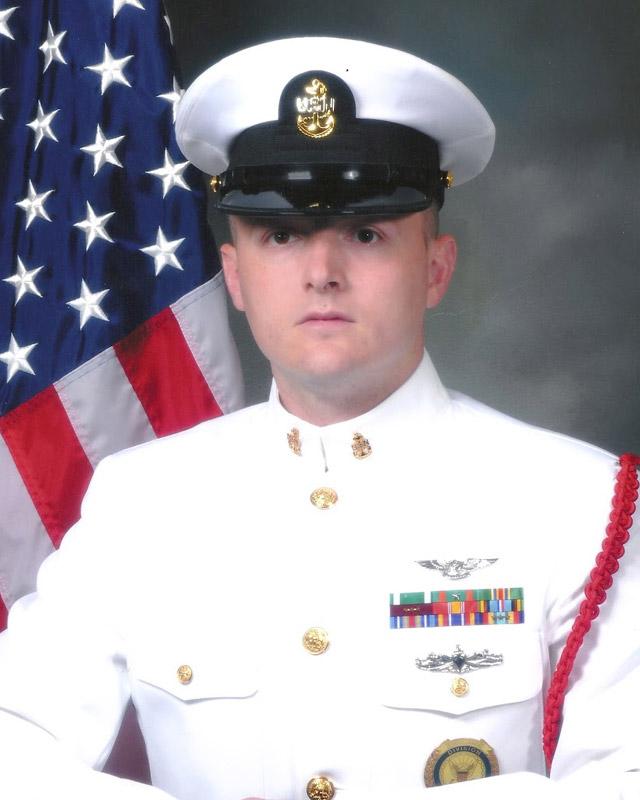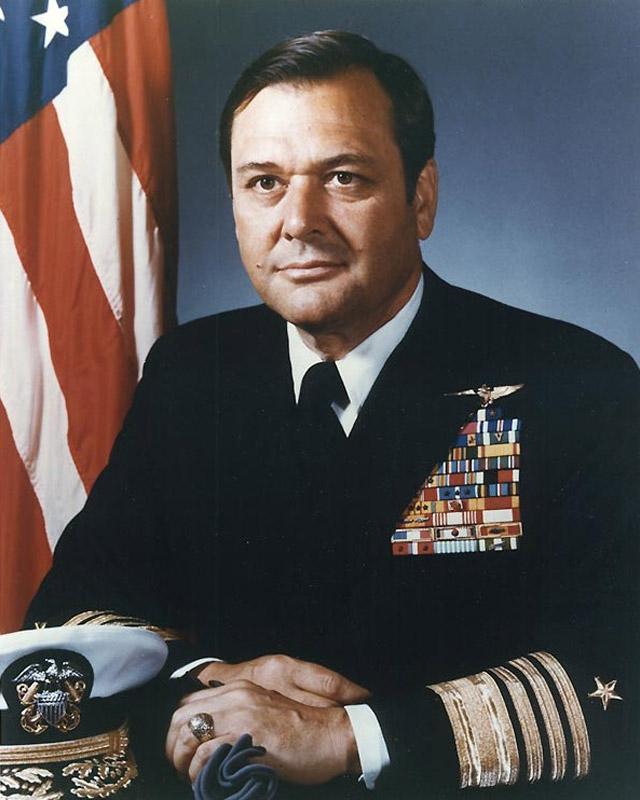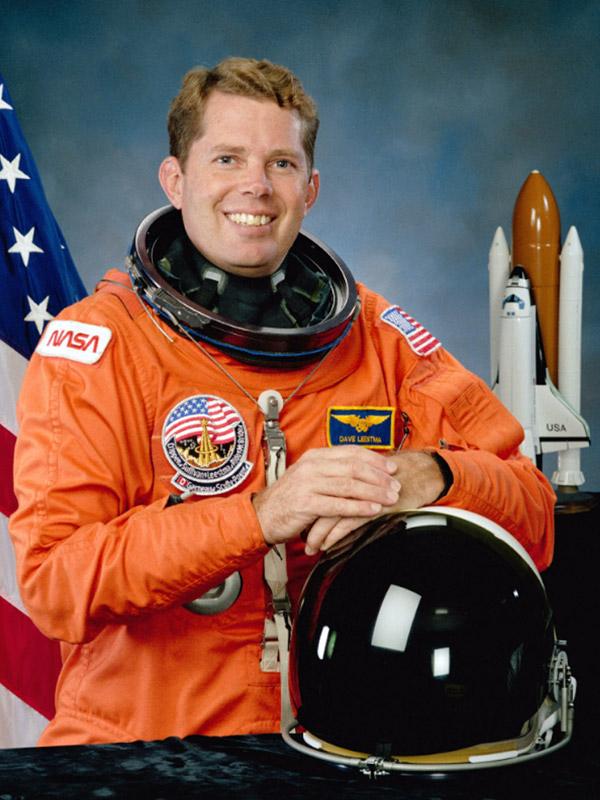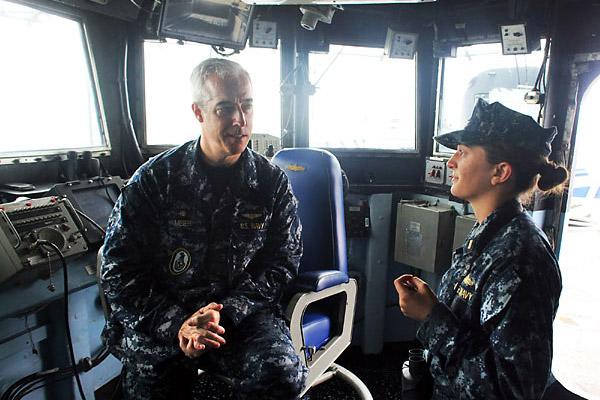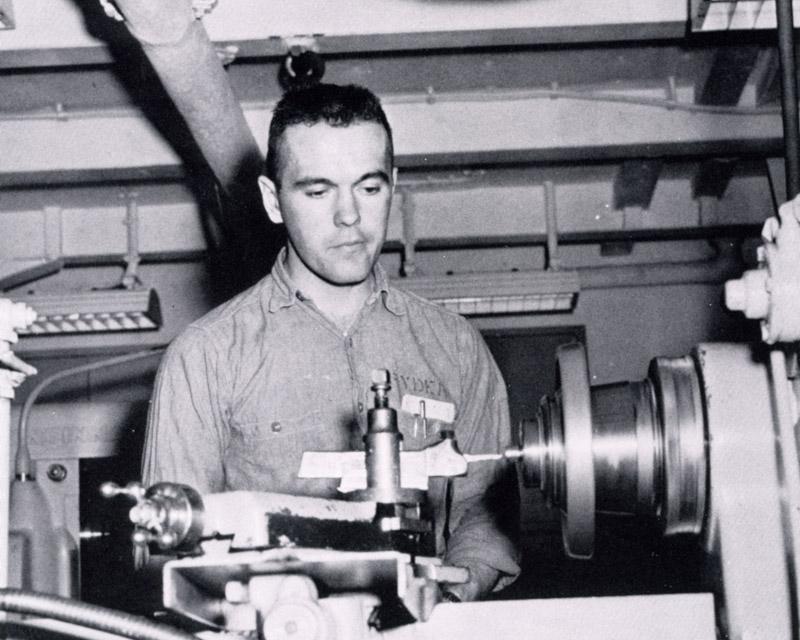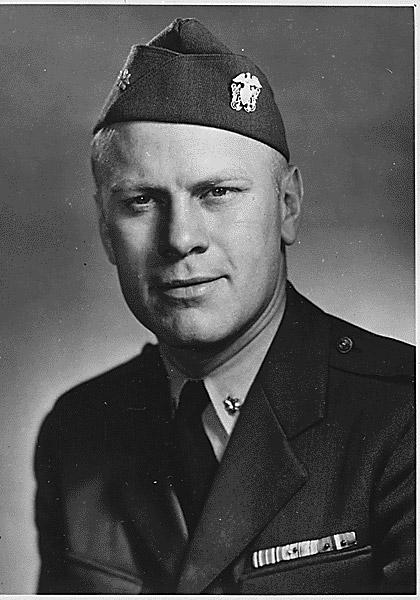-
Senior Chief Petty Officer Eric Durdle. A Sailor from the USS Gerald R. Ford (CVN-78).
Eric Durdle was born and raised in Greenville, MI. In 1998 Durdle joined the Navy: he wanted to travel the world while working at a job where he believed he could make a difference. His rating of A...Read more
Eric Durdle was born and raised in Greenville, MI. In 1998 Durdle joined the Navy: he wanted to travel the world while working at a job where he believed he could make a difference. His rating of Aviation Boatswain mate, Equipment (ABE) allowed him to work on the most powerful warships in the world.
Eric loves this life: he has worked almost every stretch and corner of the flight deck, operating and maintaining the equipment essential to sending aircraft to the skies and landing them safely upon their return. He has served aboard the USS Kennedy (VC 67), the USS Abraham Lincoln (CVN 72) and is now aboard the USS Gerald R. Ford (CVN 78).
As the old saying goes, "The chiefs run the Navy." As a Senior Chief Petty Officer, Durdle proves the rule. He supervises 40 to 60 sailors and works closely with those who move the aircraft, refuel them, and load their ordinance. Durdle has earned two Navy Commendation medals and six Navy Achievement medals for his work.
-
An Admiral of the US Navy
James Holloway III was born in Charleston, South Carolina, in 1922. Like his father, he would have a distinguished naval career, rise to the rank of Admiral, and shape the Navy in profound ways....Read more
James Holloway III was born in Charleston, South Carolina, in 1922. Like his father, he would have a distinguished naval career, rise to the rank of Admiral, and shape the Navy in profound ways.
Holloway graduated from the Naval Academy in 1942, in the first three-year accelerated class. He earned a Bronze Star for directing gunfire on a daring nighttime raid against a Japanese squadron led by the battleship Yamashiro.
Holloway flew F9F Panthers during two tours in Korea, and earned the Distinguished Flying Cross. He later commanded Attack Squadron 83, flying Douglas A-4 Skyhawks off the carrier Essex. By 1964 Holloway was studying nuclear propulsion under the personal tutelage of Admiral Hyman Rickover, in preparation for taking command of the USS Enterprise, which he assumed in 1965. With the outbreak of war in Vietnam, Holloway became the first Captain to take a nuclear carrier into combat.
Holloway left Enterprise for service at the Pentagon in 1968. There he established the Nuclear Powered Carrier Program, paving the way for the Nimitz-class carriers, for which he was awarded his first of four Distinguished Service medals. In 1972 Holloway took command of the 7th Fleet, directing significant carrier strikes against Hanoi, which helped drive the North Vietnamese to sign the cease-fire agreement in 1973.
President Richard Nixon appointed Admiral Holloway to the post of Chief of Naval Operations in 1974. Admiral Holloway retired in 1978 but remains active in naval affairs.
-
A pilot from the USS John F. Kennedy (CV 67)
David Leestma was born in Muskegon, Michigan. He spent much of his youth reading stories about the Navy. After high school, he received an appointment to the United States Naval Academy, from which...Read more
David Leestma was born in Muskegon, Michigan. He spent much of his youth reading stories about the Navy. After high school, he received an appointment to the United States Naval Academy, from which he graduated first in his class in 1971. By October 1973, Leestma had earned his wings, and within a year was flying F-14 Tomcats with VF-32, at Virginia Beach. He would make three overseas deployments aboard the USS John F. Kennedy (CV 67).
What is it like for the pilot as he moves from to launch to recovery? Leestma says:
You are thrust back into your seat and accelerate from 0 to 130 knots in about 2 seconds. Then you head out for your mission and at scheduled recovery time return to the carrier for landing. In a predefined sequence you arrive behind the carrier and fly a pattern to bring you into visual contact with the Fresnel lens (meatball). Then you (carefully!) fly your meatball/line-up/airspeed to an arrested landing, when then tailhook grabs an arresting wire aboard the carrier to bring you to a rapid stop. You maintain full throttle after touchdown until you are assured by the arresting gear officer that you are stopped and ready to taxi out of the wires. Then you throttle back and move rapidly out of the way so the next aircraft in sequence for landing can land.
When Leestma left the USS Kennedy, he continued to fly, becaming a test pilot for the Tomcat, and evaluating new components as the jet was improved. He served in NASA as a Missions Specialist aboard the Challenger (STS-41G), Columbia (STS-28), and Atlantis (STS-45).
-
Captain of the USS Gerald R. Ford (CVN-78)
A native Pennsylvanian, Meier graduated from the Naval Academy in 1986. He earned his wings two years later at Chase Field, in Beeville, Texas. Soon afterward he was assigned to VAQ (Electronic Att...Read more
A native Pennsylvanian, Meier graduated from the Naval Academy in 1986. He earned his wings two years later at Chase Field, in Beeville, Texas. Soon afterward he was assigned to VAQ (Electronic Attack Squadron) 141, the Shadowhawks, flying off the deck of the USS Theodore Roosevelt.
VAQ-141 flew the EA-6B, nicknamed the "Prowler." This subsonic jet gathered signal intelligence, jammed enemy radar, and often served as command-and-control aircraft. During Operation Desert Storm, Meier piloted his Prowler on 42 combat missions.
Meier's career took him to the USS Constellation and Kitty Hawk. He also served as the Executive officer of Truman and in 2010 was given command of the USS Gunston Hall (LSD 44).
Meier has received command of the USS Gerald R. Ford. He is the ship's first captain, and will command the Navy's first "virtually all-electric ship," manned by a crew of about 2,700 sailors. Despite its small crew size, the USS Gerald R. Ford is more powerful than any aircraft carrier ever commissioned.
-
A USS Forrestal Sailor - Richard Ryder at his lathe
Richard Ryder was born in Lowell, Michigan. At age 16 his mother signed a form that permitted him to join the Navy Reserves. The next summer, Richard attended boot camp at the Great Lakes Naval Tra...Read more
Richard Ryder was born in Lowell, Michigan. At age 16 his mother signed a form that permitted him to join the Navy Reserves. The next summer, Richard attended boot camp at the Great Lakes Naval Training Center and began training at the Grand Rapids Naval Reserve Center each month. After graduation, he took a job with General Motors and got married.
In 1955 Ryder received his draft notice and entered the Navy at the rank of Seaman 1st Class, as a Machinist Mate. He was assigned to the USS Forrestal, recently commissioned and at that time, the world's first "super" carrier.
Ryder was responsible for repairing anything mechanical aboard the ship, from Coke machines to diesel engines to the steam-driven catapult system. These repairmen were the jacks of all mechanical trades. Ryder operated the machine shops different lathes, tracking his hours in a log book, knowing that such records would help him when he returned to his job with GM.
Ryder sailed with the ship to Guantanamo Bay, Cuba for ten weeks of "shakedown," where kinks were ironed out of a new ship and its crew shaped into a team. Afterward, he sailed with his proven shipmates on Forrestal's first venture into the Mediterranean Sea, as part of the Navy's Sixth Fleet.
-
An Officer of the USS Monterey
Gerald Ford had recently earned his law degree from Yale and opened a practice in Grand Rapids when Japan attacked Pearl Harbor. By January 1942, Ford applied to join the Navy; by May he had been m...Read more
Gerald Ford had recently earned his law degree from Yale and opened a practice in Grand Rapids when Japan attacked Pearl Harbor. By January 1942, Ford applied to join the Navy; by May he had been made an Ensign, received training at Annapolis, and was at North Carolina serving as an athletic instructor for pilots in training. In June 1943 Ford was transferred to the newly commissioned USS Monterey, an aircraft carrier bound for the Pacific.
He reported aboard as an athletic and gunnery officer. Within months Captain Lester Hundt appointed him the ship's assistant navigator, placing him on the bridge to stand watch as Officer of the Deck during General Quarters.
Ford earned eight campaign medals while aboard. He directed the 40 mm guns on the fantail during fierce fighting at the Gilbert Islands and at New Ireland. He stood by the Captain, on the bridge, when Monterey supported invasions of Kwajalein and Eniwetok. They then moved from Palau to one island after another, through the Marianas to Formosa.
Lt. Ford left the ship on Christmas Eve, 1944. He was assigned to shore duty, where he stayed until the war's end, in August 1945. Later, Ford would become the 38th President of the United States.






